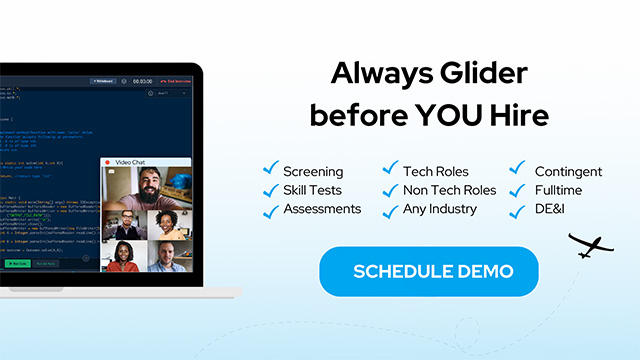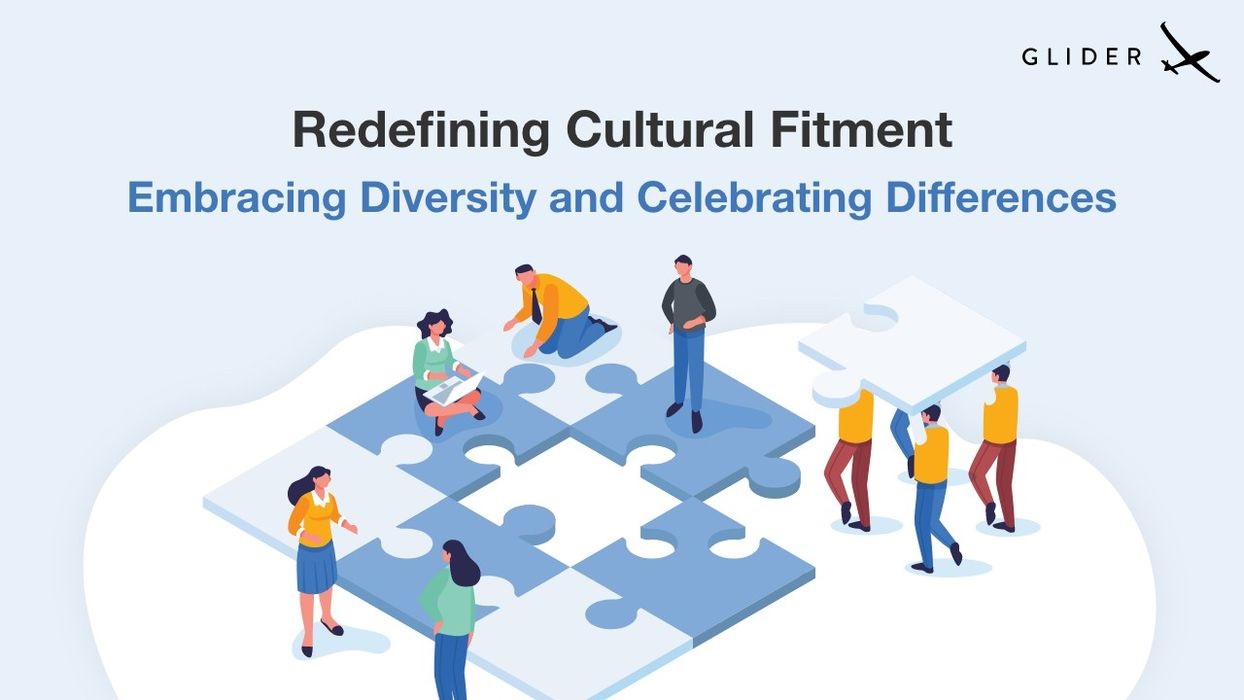
Peter Drucker once said, “Organizations must do what they are best at and should outsource the rest.” In a pandemic-infected world, this statement holds more relevance today with demand for quality contract resources as the new “normal”.
Recruitment is a talent-driven industry, and the shift of power is with high-quality, vetted talent–will they accept the recruiters call or offers of employment?
It takes a highly skilled and experienced team to filter talented candidates from a heap of resumes, let alone engage the highly talented candidate pool. As Karissa Sachs, Vice President, Digital Strategy and Talent Acquisition at Kforce say, “Candidate personas are a research-driven approach to understanding your talent audience.” Identifying and nurturing talent requires an objective, disciplined, and manufactured process to procure the desired outcome.
Satish Kumar, Co-founder, and CEO at Glider.ai provide insights into the new world where quality talent is the driver. The following is an excerpt from the panel discussion held at the World Staffing Summit on 28 January 2021. For ease, content modified into Q&A format.
A: Talent curation can be likened to a metaphor for art curation. Imagine you are the curator for an art exhibit, and you need art, quality art, and art that matches the exhibit theme. In a similar sense, for talent curation, you need to build the talent pool (art), quality fit (quality art), and talent assessment (exhibit theme).
It means talent curation should be scientific, objective, standardized, and repeatable. This procedure is applicable across all kinds of assessments, be it manual, automated, or psychometric. You know you have made the right hire when people do the real-world tasks that are repeatable from day one itself.
A: Talent curation needs two approaches. For those jobs that are evergreen and fast-moving, we need to proactively explore and build a vetted pool of candidates, and for low-volume or sporadic jobs, we can adopt a reactive approach of vetting candidates. In this regard, talent curation consists of everyone like priority workers, alumni, retired employees, talent pool, referrals, and even returning employees.
That said, one must know that direct sourcing can never be an excuse to replace a full staffing ecosystem. Instead, hiring managers can accommodate direct sourcing within the staffing ecosystem.
A: Bias may be conscious or unconscious. But, hiring managers should understand that a “one size fits all” approach is not the norm in the staffing industry, especially when it comes to talent curation. Of course, blue-collar jobs are an exception. Still, blue-collar jobs must be assessed in terms of physical traits, attention to detail, safety, etc.
Even with automation, there is the human element. Hence, bias is always an issue in achieving diversified talent curation. There are a few ways you can mitigate:
In this regard, Glider.ai maintains data anonymity like no other when screening candidates. For example, throughout the screening process, from simulated tasks to blind tests, Glider measures the performance and scores through pre-defined criteria.
Everything is so automated that hiring managers do not get to see any personally identifiable data until the candidate is shortlisted.
A: One common observation based on interactions across hundreds of staffing companies is the commitment to quality and time to fill the quality talent. Smartly said, it is the “ideal fit.”
From the Glider.ai perspective, both time to hire and quality have always been at the forefront. Yet, it is a challenge in operational terms because of the effervescent nature of the contingent market.
It is incredible to know that the quest for quality is the biggest theme of 2021 – an essential ingredient that needs to become the gold standard for operations at any organization.
A: The key is don’t ignore them! Also, staffing teams should realize that candidate experience is a crucial aspect in the whole process of talent curation. Hence, Glider.ai gets a first-hand understanding of the candidate persona. Staffing managers need to design talent blueprint engagements besides adopting a personalized communication strategy.
A: This is where evaluation design enters the picture. First, most recruiters are not technical people. Hence, tech roles can become a hard nut to crack.
In cases like this, Glider.ai works in partnership with hiring managers. Both the parties define talent calibration. Then, the input is processed and transformed into real-world tasks. When a candidate can perform it, it confirms his/her competency with the types of tech environments they would work on if employed.
In other words, this is a time-lapse capture of making a match between expectations and performance. Our technology can empower recruiters to make hiring decisions for technical contingent roles by matching expectations and performance.
A: The answer is to streamline assessment design on a few but critical items rather than everything. In a talent pool, we typically find two kinds of people:
Glider.ai juggles the divide on how long one should be assessed versus how deep one should be assessed.
One word of caution, maintain crisp and short assessments. This process ensures higher candidate participation with your assessments and speeds up the interview process.
A: It is an open secret that most job descriptions do not represent the actual job needs. Instead, hiring managers should focus on critical attributes required for the job, so candidate skills and talents are evaluated equally. Realigning this way sets expectations and expected outcomes.
A: Contingent hiring is a multi-party system: the enterprise, MSP, and staffing agency. All this adds more complexity to the curation process. As a result, information and interpretation often get lost.
A: In a practical sense, AI and ML make talent curation faster and efficient. But there is a lot of groundwork needed to make the automation work the way you need.
As a first step, training AI is highly essential for diverse industrial verticals (be it technical and non-technical or finance and energy) to reduce inaccuracies in matches. A candidate’s claim in their resume must be matched against the job description. It is a norm that should be followed regardless of their assessments and performances.
Satish Kumar, an ex-Oracle, a U.C. Berkeley, and IIT-K graduate, is deeply passionate about HRTech and EdTech. He co-founded Glider.ai, an AI talent Intelligence Platform to help the enterprise and staffing firms hire quality talent at scale.
Previously, Kumar started Snapwiz, Inc – a multi-channel learning and assessment product for education. Some of the world’s top publishers like Wiley and McGraw Hill use Snapwiz. Before Snapwiz, he also cofounded GetVendors, an online marketing company later acquired by MatchPoint (a division of Connexus Group).
Earlier, Kumar held a senior engineering and management position at Oracle Corp, where he was responsible for building RFID and mobility products in the supply chain.
Kumar believes customers do not look for products; instead, they look for solutions to their problems. His one piece of advice for budding entrepreneurs is to listen to the customers first, understand their problems and reading between the lines. Like all passionate entrepreneurs, he is an avid reader of books. The one book he recommends for everyone? Zero to One by Peter Thiel.



